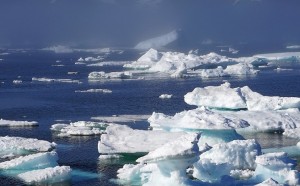 Prior estimates that the ice loss from one of world’s largest ice sheets has accelerated over the past few years were confirmed by a study recently published in the journal Geophysical Research Letters by an international team of researchers.
Prior estimates that the ice loss from one of world’s largest ice sheets has accelerated over the past few years were confirmed by a study recently published in the journal Geophysical Research Letters by an international team of researchers.
The lead author, Malcolm McMillan from the Centre for Polar Observation and Modeling, and his colleagues mapped Greenland with incredibly high resolution (5 km distances) by mapping data obtained from the Cryosat 2 satellite which uses a technique called radar altimetry to measure the height of surfaces.
Humans emit heat-trapping gases which cause many changes to the earth, including ice-melts on top of mountains, melting ice floating in oceans, as well as melting large sheets of ice and glaciers, which is the loss that mostly affects ocean levels as this water runs into the oceans and raises sea levels.
In order to determine exactly what is happening with the Greenland Ice Sheet, which is thousands of meters thick, scientists had to account for various other changes as well, including whether they are getting taller or shorter, surface roughness, water content, and changes to density.
The top layers of the Greenland Ice Sheet include both snow and firn, which later get buried and compressed into ice, which is why it is vital that the constitution of the ice sheet is important in estimating how much water is being delivered to the ocean.
According to the authors of the study, not only is Greenland losing loads of ice, but the loss varies significantly depending on location and year. The western side of the ice sheet is losing much more ice than the eastern side, and researchers found that a small part of the ice sheet, constituting less than 1%, is responsible for more than 10% of the mass loss.
The study took place over four years, and record summertime temperatures in 2012 were responsible for a missive loss that year. According to the study, there has been approximately 270 gigatons of ice loss per year for 2011-2014, which constitutes around 110 million Olympic size swimming pools worth of water each year.
Buy water cooler or rent water cooler from Living-Water.





